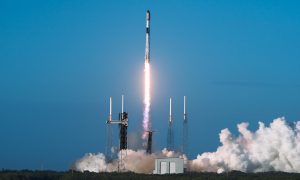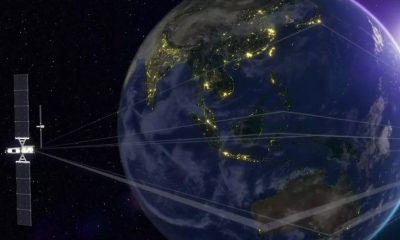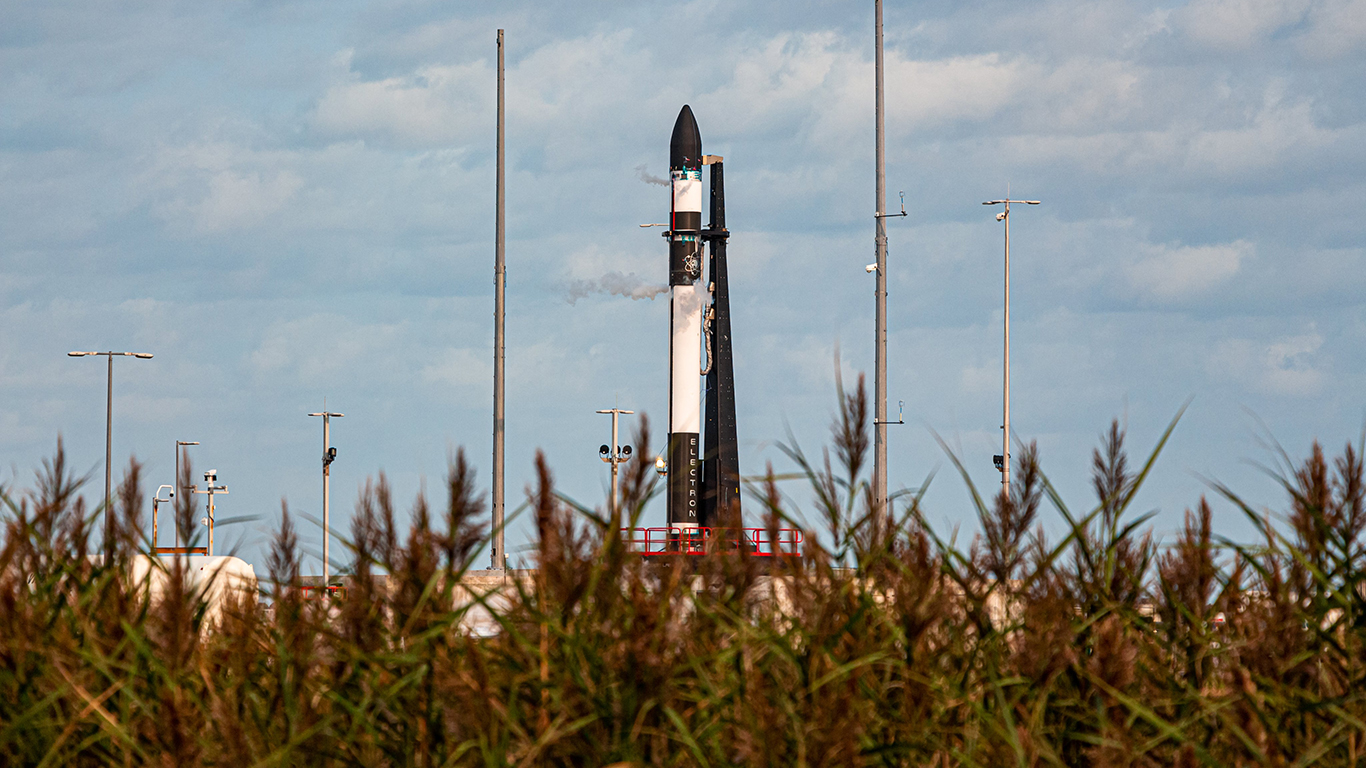

News
Rocket Lab secretly launches revolutionary satellite and readies for US launch debut
Rocket Lab’s recent flawless return to flight mission nicknamed “I Can’t Believe It’s Not Optical,” set the company up for loftier goals in the latter half of 2020 in a big way. Returning to operation after an in-flight anomaly and subsequent investigation is a massive accomplishment for any launcher. Returning to flight and debuting a pathfinder satellite developed and built in-house, however, solidified Rocket Lab as a full end-to-end space systems company.
For good measure, company founder and chief executive officer, Peter Beck, hopes to round out the year by activating two more Electron launchpads – one of which will be the launcher’s first US-based launch location dedicated to supporting missions for the United States government. Furthermore, following Electron’s seventeenth flight, Rocket Lab hopes to recover the expended first-stage booster – and perhaps more importantly, a mountain of data – as a stepping stone to launch vehicle reuse, a practice pioneered and solely dominated by SpaceX.
A return to flight and an introduction to space systems
Just eight weeks after Electron’s ill-fated thirteenth flight resulting in the loss of a second stage and all customer payloads due to an in-flight electrical anomaly, the next Electron was raised at Launch Complex 1 in Mahia, New Zealand. The fourteenth flight of Electron was a dedicated mission for San Francisco-based information services company, Capella Space. Initially announced, the mission deployed a single microsatellite called “Sequoia” to an approximate 500km circular orbit. Peter Beck later confirmed the mission also secretly featured the successful deployment of Rocket Lab’s first in-house designed and built satellite called “First Light.”
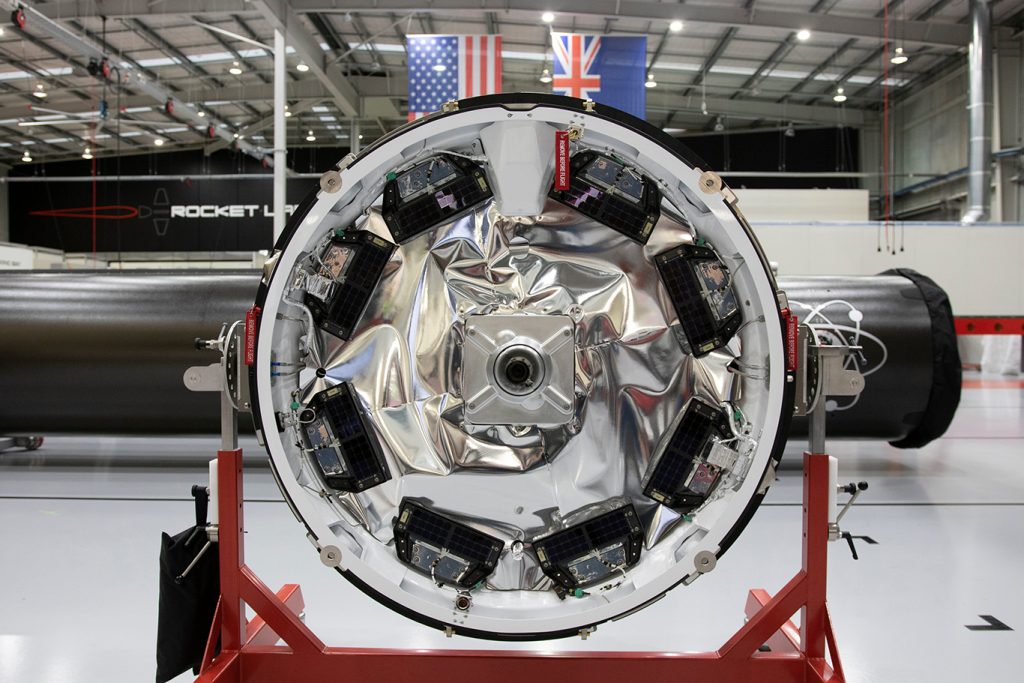
“First Light” is a pathfinder spacecraft based on Rocket Lab’s configurable Photon satellite platform. According to Rocket Lab, it exploits Electron’s Kick Stage, “a nimble but powerful extra stage on Electron designed to circularize payload orbits.” The Kick Stage is designed as a satellite bus with extended capabilities to transition into a satellite – Photon – and performing an independent standalone mission. This is exactly what occurred with “First Light.”
Following the deployment of the “Sequoia” microsatellite, Rocket Lab teams signaled the Kick Stage to enable the standalone Photon capabilities. The command transitioned the spacecraft from a delivery vehicle to a fully functional satellite for the very first time. “First Light” serves as the testbed of many upgraded components including improved management systems for power, thermal, and attitude control.
in a statement provided by Rocket Lab Beck said, “Launching the first Photon mission marks a major turning point for space users – it’s now easier to launch and operate a space mission than it has ever been. When our customers choose a launch-plus-spacecraft mission with Electron and Photon, they immediately eliminate the complexity, risk, and delays associated with having to build their own satellite hardware and procure a separate launch.”
Eventually, the extended Photon capabilities of the Kick Stage will be used to support lunar and interplanetary missions. Beck has gone on record many times stating that Rocket Lab is working toward funding a private mission to Venus with a more robust version of the Photon platform which will deploy a probe to collect information about the Venusian atmosphere.
Counting down to Electron’s first launch from Virginia
On September 17, just two weeks after introducing the world to “First Light,” Rocket Lab announced the final successful Electron wet dress rehearsal at its new Launch Complex 2 (LC-2) at the Mid-Atlantic Regional Spaceport in Wallops Island, Virginia.
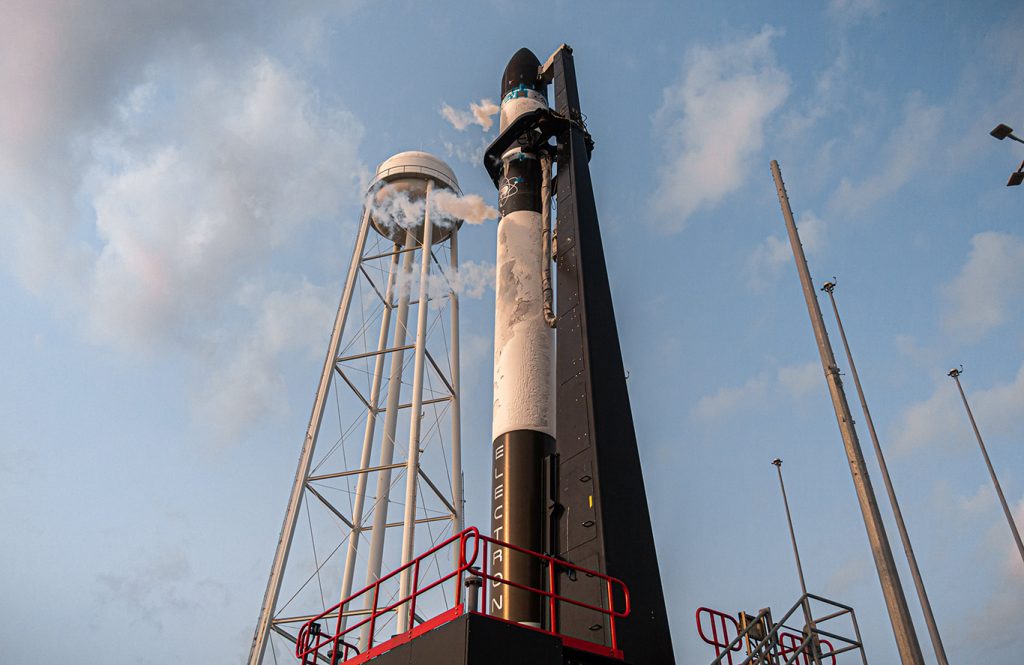
The wet dress rehearsal is a standard preparatory practice of raising the rocket vertical on the launchpad, fueling the rocket, and conducting a practice run of all countdown systems and procedures ahead of a launch attempt. This gives launch teams the opportunity to ensure that the rocket is prepared for flight and work out any kinks that may arise ahead of sending the vehicle to space. The countdown is carried down to T-0 and then the vehicle is emptied and safed.
Recently, Rocket Lab was granted a five-year Launch Operator License by the Federal Aviation Administration for the LC-2 site enabling the space systems company to support up to ten Electron missions a year from U.S. soil. The new operator license combined with the one previously procured for Launch Complex 1 in New Zealand allows Rocket Lab to support up to 130 flights of the Electron rocket globally per year.
It was speculated that Electron’s next flight – and the first launch from LC-2 in Virginia – would be the dedicated STP-27RM mission coordinated by the U.S. Space Force’s Space and Missile Systems Center. The first from Virginia will launch a single microsatellite for the Air Force Research Laboratory’s Monolith program. However, the first mission from Virginia is still waiting on a debut date to be identified.
In order for Electron to fly from Virginia, NASA must first certify Electron’s Autonomous Flight Termination System (AFTS) – a protective measure that will automatically destroy the rocket in a safe manner should anything anomalous occur during first stage flight. Electron’s AFTS has already previously flown numerous times from New Zealand. The first flight from Virginia, however, will be the first time a vehicle will launch from the Mid-Atlantic Regional Spaceport with an AFTS.
15 launches, 3 launch pads, and a booster recovery
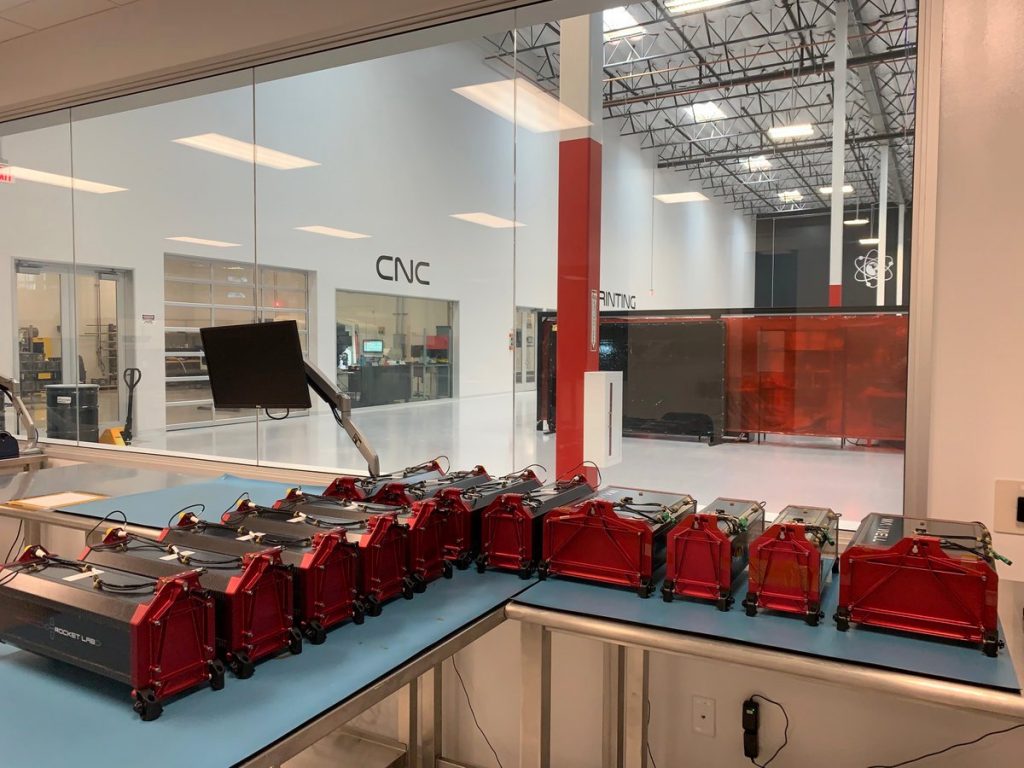
Until then, Rocket Lab is busy preparing for flight fifteen from New Zealand. The recently announced mission, nicknamed “In Focus,” is a rideshare mission featuring nine SuperDove satellites for Planet Labs and one payload for Spaceflight Inc. customer Canon Electronics Inc.
While preparing for the next flight, nearby Rocket Lab is simultaneously wrapping up construction on yet another launch pad. Launch Complex 1B is very much near completion and is expected to be brought online by year’s end. And that’s not the last goal Rocket Lab looks to achieve by the new year.
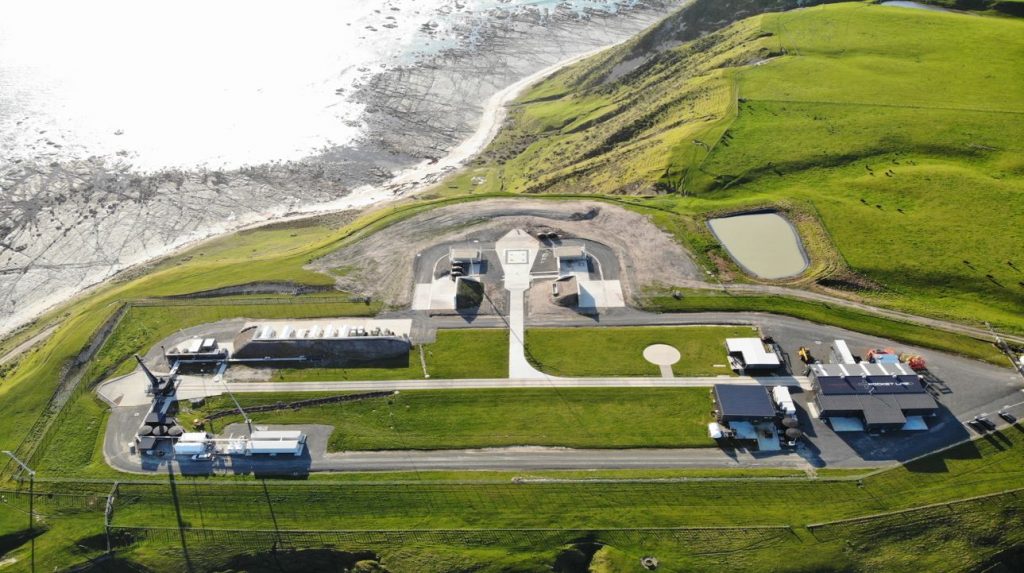
Beck has time and time again confirmed that the seventeenth flight of Electron will be the first attempt at recovering an expended first stage booster. Eventually, the company will attempt to catch the booster as it is falling back to Earth under the canopy of a parachute by utilizing a helicopter equipped with a specialized grappling hook. The first attempt at recovering a booster is not expected to be quite as elaborate.
Rocket Lab has strengthened the first-stage booster enough to survive the return trip. Until now, the booster has slammed into the ocean water and broken up into small bits. With the assistance of improved software and a deployable parachute, the booster of flight seventeen is expected to softly float back for a gentle water landing with the assistance of “recovery pontoons” as described in a Twitter post by Beck.
As of now, Rocket Lab has not identified any target dates for the upcoming milestones. The company has previously stated that the first mission from Virginia is expected to launch in the third quarter of 2020. Electron’s next flight – “In Focus” – from New Zealand is expected in the first half of October. Rocket Lab will provide future launch and development updates on their social media accounts.
News
Tesla cleared in Canada EV rebate investigation
Tesla has been cleared in an investigation into the company’s staggering number of EV rebate claims in Canada in January.
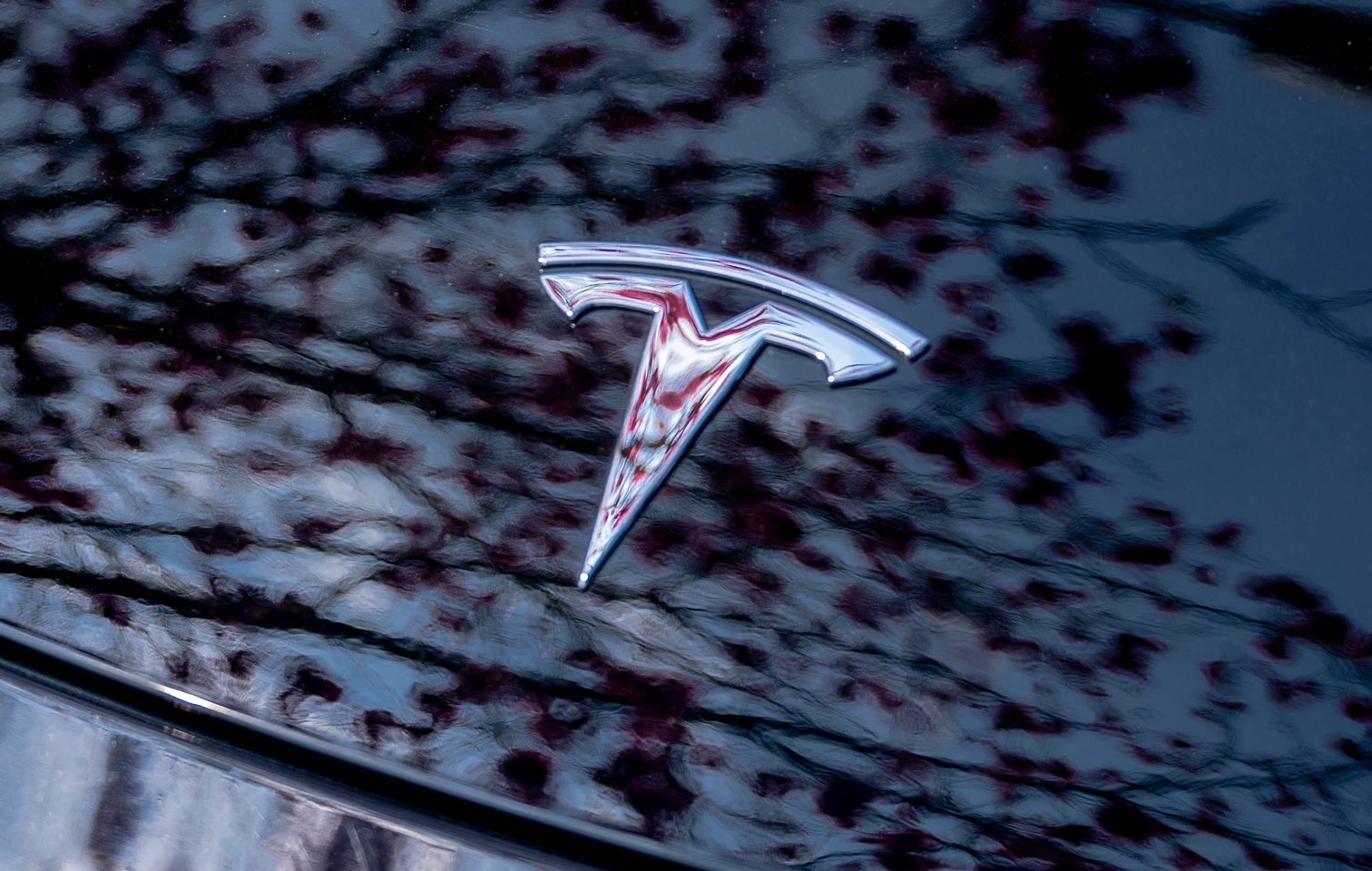
Canadian officials have cleared Tesla following an investigation into a large number of claims submitted to the country’s electric vehicle (EV) rebates earlier this year.
Transport Canada has ruled that there was no evidence of fraud after Tesla submitted 8,653 EV rebate claims for the country’s Incentives for Zero-Emission Vehicles (iZEV) program, as detailed in a report on Friday from The Globe and Mail. Despite the huge number of claims, Canadian authorities have found that the figure represented vehicles that had been delivered prior to the submission deadline for the program.
According to Transport Minister Chrystia Freeland, the claims “were determined to legitimately represent cars sold before January 12,” which was the final day for OEMs to submit these claims before the government suspended the program.
Upon initial reporting of the Tesla claims submitted in January, it was estimated that they were valued at around $43 million. In March, Freeland and Transport Canada opened the investigation into Tesla, noting that they would be freezing the rebate payments until the claims were found to be valid.
READ MORE ON ELECTRIC VEHICLES: EVs getting cleaner more quickly than expected in Europe: study
Huw Williams, Canadian Automobile Dealers Association Public Affairs Director, accepted the results of the investigation, while also questioning how Tesla knew to submit the claims that weekend, just before the program ran out.
“I think there’s a larger question as to how Tesla knew to run those through on that weekend,” Williams said. “It doesn’t appear to me that we have an investigation into any communication between Transport Canada and Tesla, between officials who may have shared information inappropriately.”
Tesla sales have been down in Canada for the first half of this year, amidst turmoil between the country and the Trump administration’s tariffs. Although Elon Musk has since stepped back from his role with the administration, a number of companies and officials in Canada were calling for a boycott of Tesla’s vehicles earlier this year, due in part to his association with Trump.
News
Tesla Semis to get 18 new Megachargers at this PepsiCo plant
PepsiCo is set to add more Tesla Semi Megachargers, this time at a facility in North Carolina.
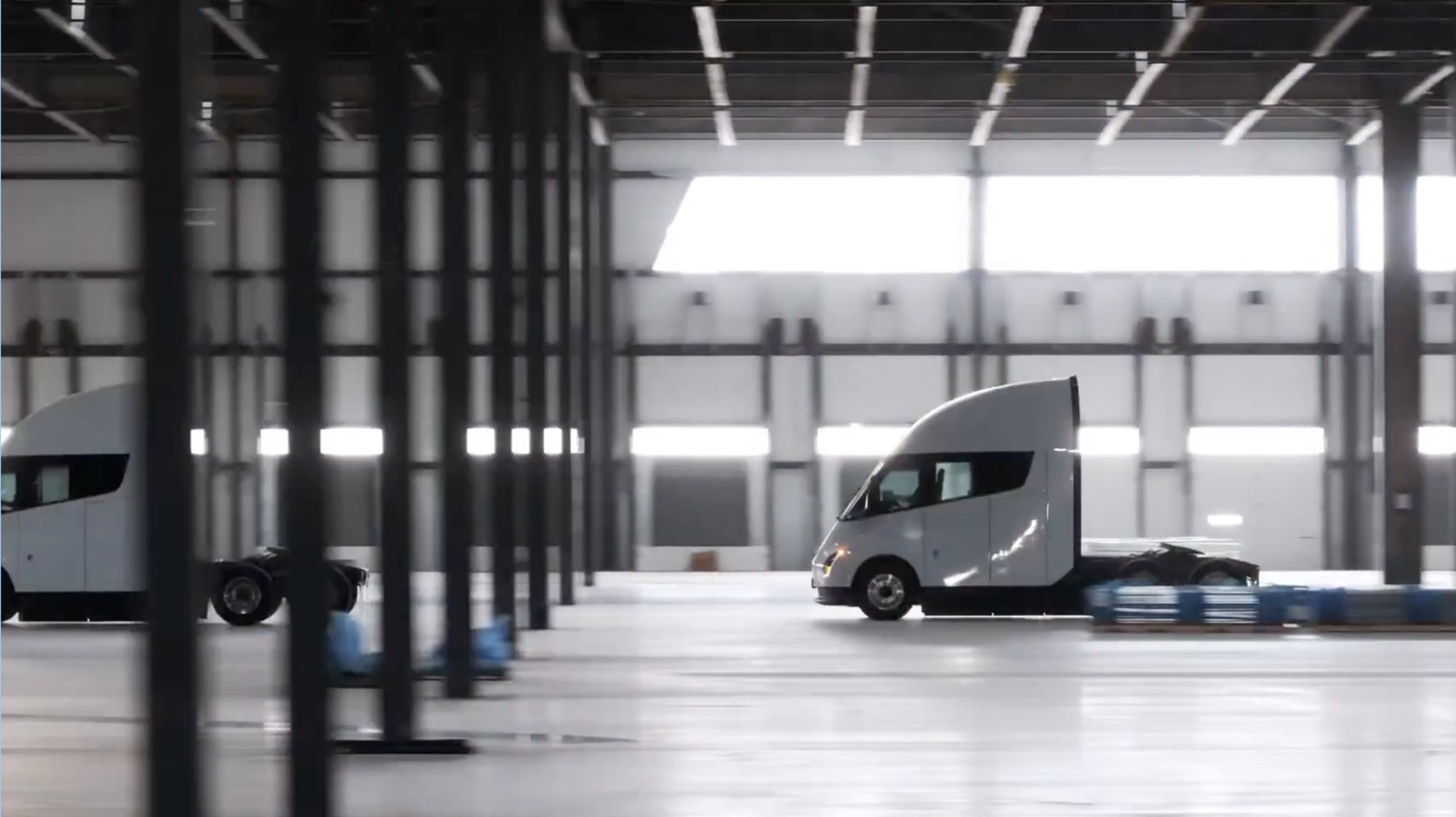
Tesla partner PepsiCo is set to build new Semi charging stations at one of its manufacturing sites, as revealed in new permitting plans shared this week.
On Friday, Tesla charging station scout MarcoRP shared plans on X for 18 Semi Megacharging stalls at PepsiCo’s facility in Charlotte, North Carolina, coming as the latest update plans for the company’s increasingly electrified fleet. The stalls are set to be built side by side, along with three Tesla Megapack grid-scale battery systems.
The plans also note the faster charging speeds for the chargers, which can charge the Class 8 Semi at speeds of up to 1MW. Tesla says that the speed can charge the Semi back to roughly 70 percent in around 30 minutes.
You can see the site plans for the PepsiCo North Carolina Megacharger below.
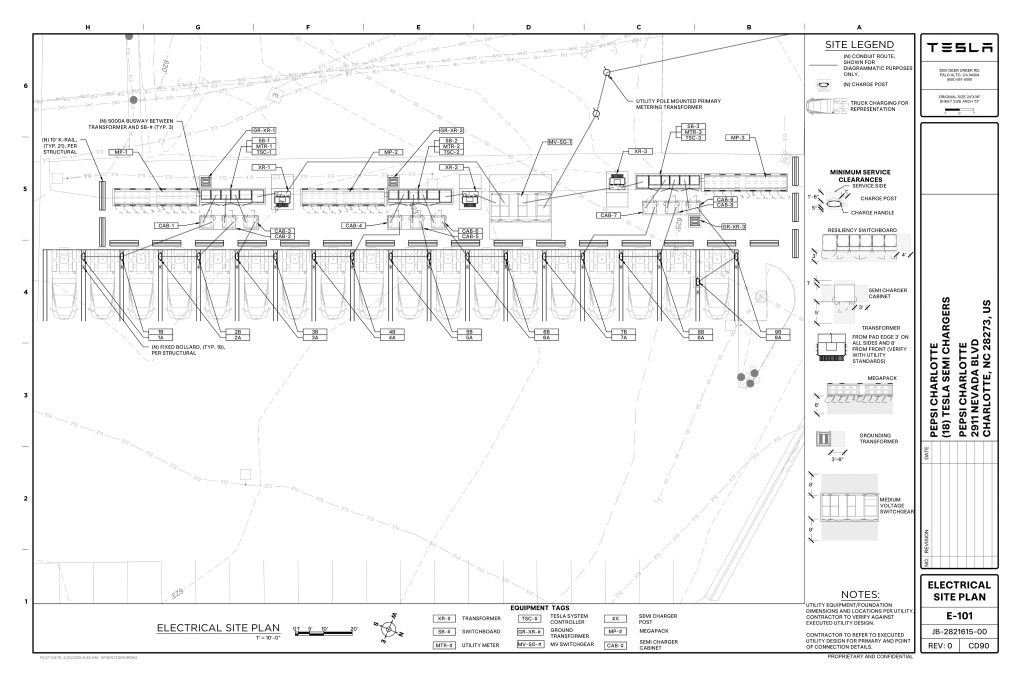
Credit: PepsiCo (via MarcoRPi1 on X)
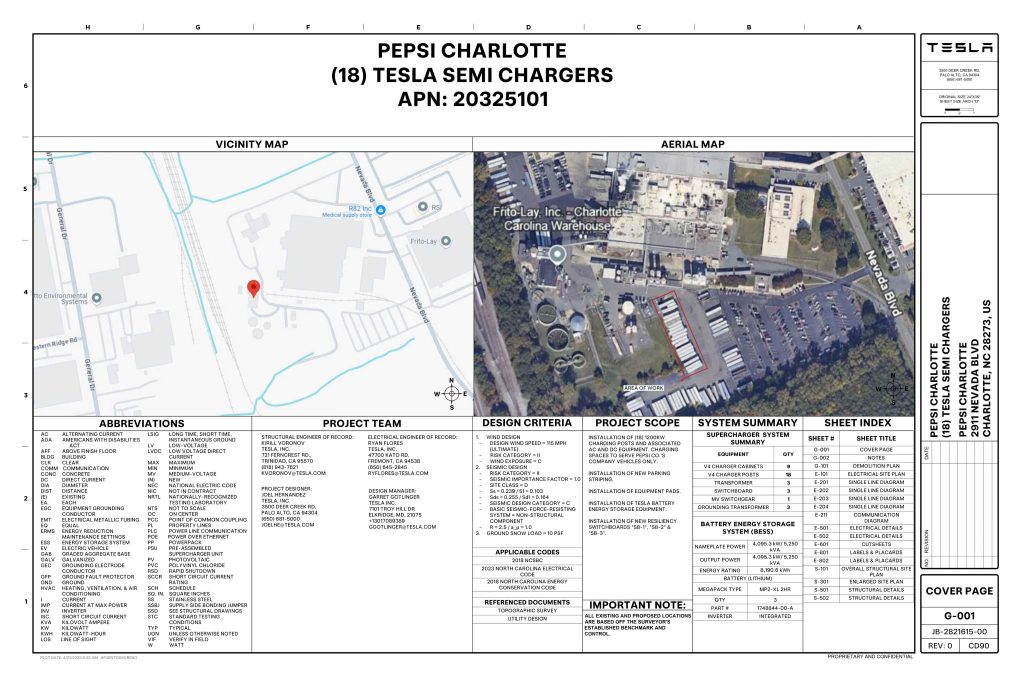
Credit: PepsiCo (via MarcoRPi1 on X)
READ MORE ON THE TESLA SEMI: Tesla to build Semi Megacharger station in Southern California
PepsiCo’s Tesla Semi fleet, other Megachargers, and initial tests and deliveries
PepsiCo was the first external customer to take delivery of Tesla’s Semis back in 2023, starting with just an initial order of 15. Since then, the company has continued to expand the fleet, recently taking delivery of an additional 50 units in California. The PepsiCo fleet was up to around 86 units as of last year, according to statements from Semi Senior Manager Dan Priestley.
Additionally, the company has similar Megachargers at its facilities in Modesto, Sacramento, and Fresno, California, and Tesla also submitted plans for approval to build 12 new Megacharging stalls in Los Angeles County.
Over the past couple of years, Tesla has also been delivering the electric Class 8 units to a number of other companies for pilot programs, and Priestley shared some results from PepsiCo’s initial Semi tests last year. Notably, the executive spoke with a handful of PepsiCo workers who said they really liked the Semi and wouldn’t plan on going back to diesel trucks.
The company is also nearing completion of a higher-volume Semi plant at its Gigafactory in Nevada, which is expected to eventually have an annual production capacity of 50,000 Semi units.
Tesla executive teases plan to further electrify supply chain
News
Tesla sales soar in Norway with new Model Y leading the charge
Tesla recorded a 54% year-over-year jump in new vehicle registrations in June.
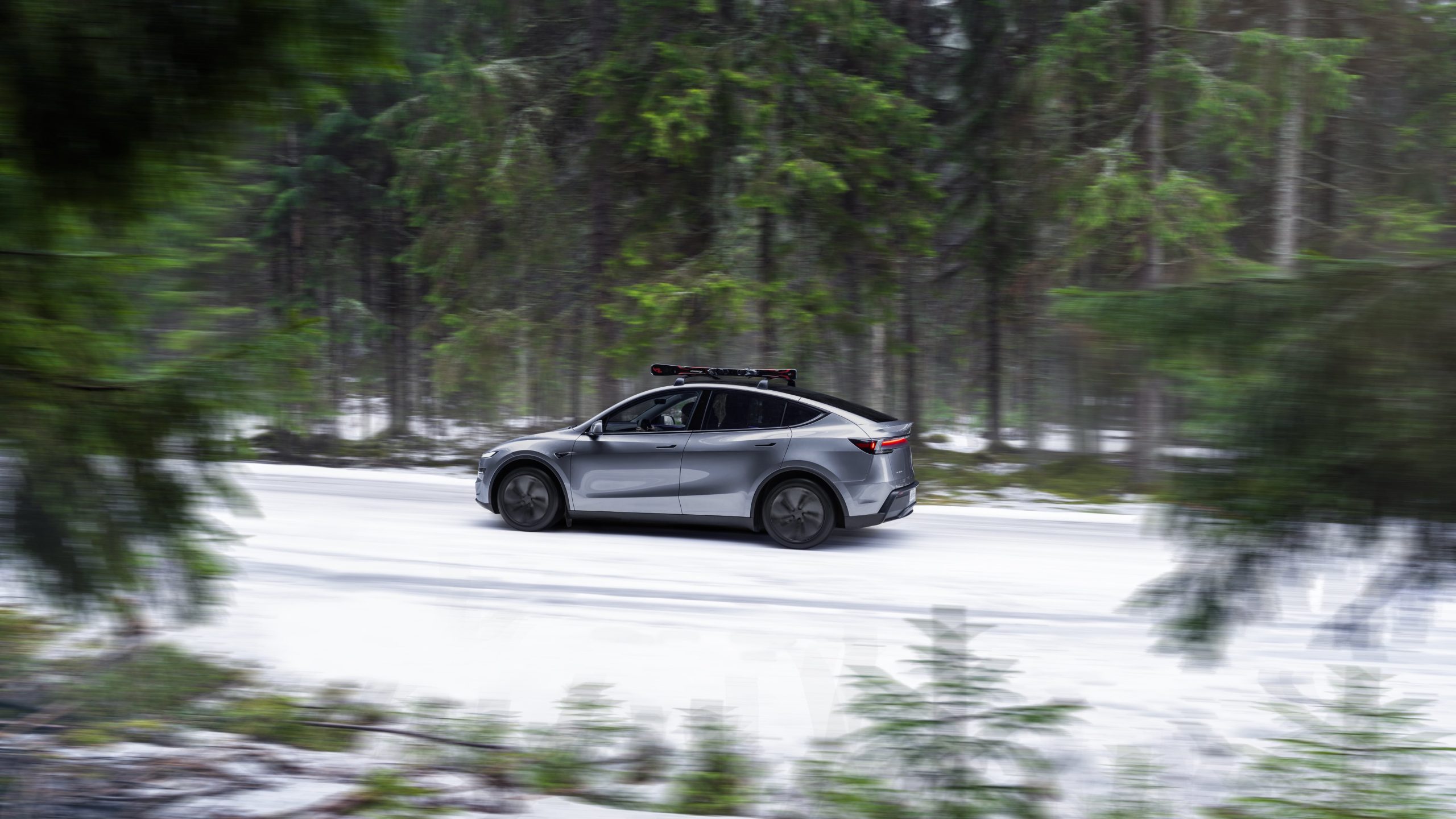
Tesla is seeing strong momentum in Norway, with sales of the new Model Y helping the company maintain dominance in one of the world’s most electric vehicle-friendly markets.
Model Y upgrades and consumer preferences
According to the Norwegian Road Federation (OFV), Tesla recorded a 54% year-over-year jump in new vehicle registrations in June. The Model Y led the charge, posting a 115% increase compared to the same period last year. Tesla Norway’s growth was even more notable in May, with sales surging a whopping 213%, as noted in a CNBC report.
Christina Bu, secretary general of the Norwegian EV Association (NEVA), stated that Tesla’s strong market performance was partly due to the updated Model Y, which is really just a good car, period.
“I think it just has to do with the fact that they deliver a car which has quite a lot of value for money and is what Norwegians need. What Norwegians need, a large luggage space, all wheel drive, and a tow hitch, high ground clearance as well. In addition, quite good digital solutions which people have gotten used to, and also a charging network,” she said.
Tesla in Europe
Tesla’s success in Norway is supported by long-standing government incentives for EV adoption, including exemptions from VAT, road toll discounts, and access to bus lanes. Public and home charging infrastructure is also widely available, making the EV ownership experience in the country very convenient.
Tesla’s performance in Europe is still a mixed bag, with markets like Germany and France still seeing declines in recent months. In areas such as Norway, Spain, and Portugal, however, Tesla’s new car registrations are rising. Spain’s sales rose 61% and Portugal’s sales rose 7% last month. This suggests that regional demand may be stabilizing or rebounding in pockets of Europe.
-

 Elon Musk2 weeks ago
Elon Musk2 weeks agoTesla investors will be shocked by Jim Cramer’s latest assessment
-

 Elon Musk2 days ago
Elon Musk2 days agoxAI launches Grok 4 with new $300/month SuperGrok Heavy subscription
-

 Elon Musk4 days ago
Elon Musk4 days agoElon Musk confirms Grok 4 launch on July 9 with livestream event
-

 News1 week ago
News1 week agoTesla Model 3 ranks as the safest new car in Europe for 2025, per Euro NCAP tests
-

 Elon Musk2 weeks ago
Elon Musk2 weeks agoA Tesla just delivered itself to a customer autonomously, Elon Musk confirms
-

 Elon Musk1 week ago
Elon Musk1 week agoxAI’s Memphis data center receives air permit despite community criticism
-

 News2 weeks ago
News2 weeks agoXiaomi CEO congratulates Tesla on first FSD delivery: “We have to continue learning!”
-

 Elon Musk2 weeks ago
Elon Musk2 weeks agoTesla scrambles after Musk sidekick exit, CEO takes over sales








